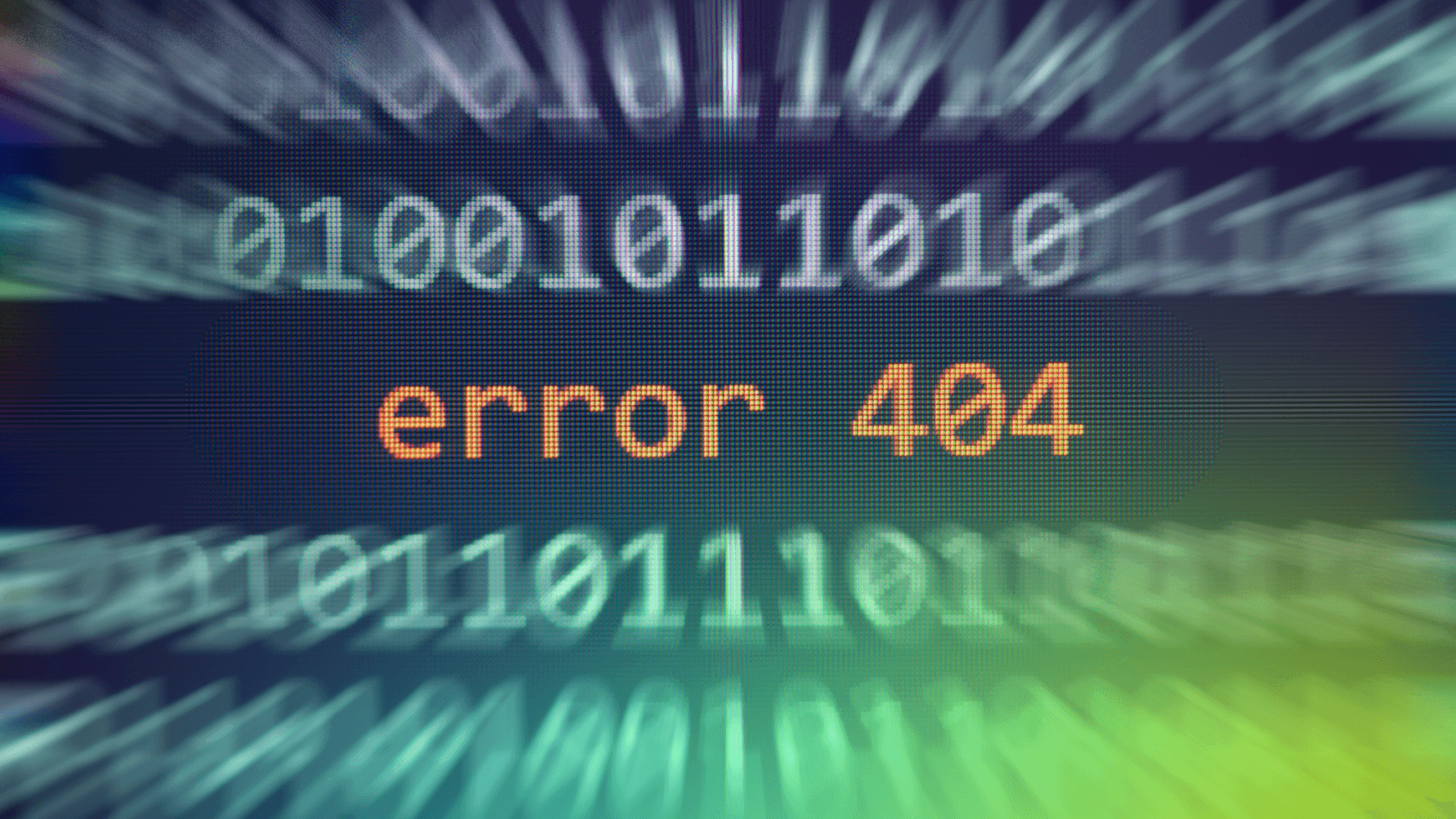Why most blockchains can't handle AI (and what changes that)
Most blockchains can't handle AI's computational demands. High costs, limited speed, and storage constraints require purpose-built modular infrastructure instead.
 By Joey Prebys•November 11, 2025
By Joey Prebys•November 11, 2025
What you can expect
- What decentralized AI actually needs from blockchain
- The infrastructure gap: Why most blockchains struggle with AI
- Why modular blockchain technology works best
- Polkadot's modular advantage for AI workloads
- The path forward for AI on blockchain
Artificial intelligence and blockchain technology seem like a match made in heaven. You get the intelligence and automation of AI with the transparency and verifiability of blockchain. This means verifiable AI models anyone can audit, contributors who actually get paid for their work, and systems that aren't controlled by a handful of tech companies.
However, most blockchain networks weren’t built for this. Monolithic chains force AI workloads to compete with DeFi, NFTs, and regular transactions for the same resources. Decentralized AI requires blockchain infrastructure that can handle multiple capabilities simultaneously and at speed: verifiable data provenance, coordination of distributed compute across thousands of nodes, cryptographic proof storage, and seamless access to resources across networks. That kind of multitasking pushes beyond what today’s monolithic chains can deliver.
Real projects are finding this out the hard way. Network instability means AI systems stop mid-task. Throughput limits bottleneck verification proofs and coordination messages. High transaction costs make data provenance and compute marketplaces economically unfeasible. These aren't edge cases—they're fundamental infrastructure problems.
Polkadot's modular architecture solves this. Instead of forcing everything through a single chain, specialized chains handle specific AI workloads—data provenance, confidential computing, autonomous agents—while communicating seamlessly. This separation allows each chain to optimize for its purpose without competing for the same resources.
What decentralized AI actually needs from blockchain
Decentralized AI requires blockchain infrastructure for five critical functions:
- Verifiable data: Proving the origin and integrity of training data
- Computation verification: Cryptographic proofs that AI operations were performed correctly
- Coordination: Managing distributed compute resources and task allocation
- Economic incentives: Paying data contributors and compute providers fairly
- Interoperability: Enabling AI systems to access resources across multiple networks
Different blockchain ecosystems approach these different tradeoffs:
- Ethereum is focused on verifiability through onchain proofs and identity frameworks, but struggles with throughput and costs. The ecosystem has turned to Layer 2 rollups as a solution, yet this introduces new challenges: fragmentation across incompatible L2s, bridging risks, and coordination complexity for applications that need to work across the entire ecosystem.
- Solana emphasizes speed with decentralized GPU marketplaces like Nosana and Io.net, but suffers from reliability issues.
- Polkadot uses modular architecture where specialized chains handle each function independently.
Polkadot's modular approach introduces coordination complexity across multiple chains, but solves this through native cross-chain messaging (XCM) that's built into the protocol layer rather than requiring third-party bridges. This enables Polkadot to handle all five functions without the typical tradeoffs between speed, scalability, and security.
The infrastructure gap: Why most blockchains struggle with AI

The divide between what AI systems require and what monolithic blockchains can deliver isn't just a scaling issue. It's structural. When everything runs on a single chain competing for the same resources, AI workloads lose. Here's why:
Speed and throughput limitations
Ethereum processes around 15 to 30 transactions per second on its base layer. While decentralized AI doesn't run computations onchain, it does need blockchain for critical coordination functions.
Consider a decentralized compute marketplace like Nosana: compute providers must register their available resources onchain, users submit task requests via smart contracts, the system coordinates task allocation across thousands of nodes, and micropayments settle between providers and users. All require onchain transactions. A decentralized knowledge graph like OriginTrail anchors cryptographic fingerprints onchain every time data is added, updated, or verified, creating an immutable audit trail.
These aren't occasional transactions. An active decentralized compute marketplace coordinating tasks across thousands of nodes can generate hundreds of coordination messages, verification proofs, and payment settlements per minute. When a blockchain handles only dozens of transactions per second total across all users, even a handful of AI applications competing for blockspace with DeFi, NFTs, and regular transactions creates congestion that makes real-time coordination difficult.
Some chains achieve higher throughput but with significant tradeoffs. Between 2021 and 2024, Solana experienced multiple major outages, including a five-hour network halt in February 2024. Each outage meant smart contracts couldn't execute, and real-time applications failed. For AI workloads that require consistent uptime for coordination and payment settlement, these disruptions are catastrophic. AI infrastructure can't simply pause and wait for the network to restart.
Computational costs
Every data provenance record, every verification proof, every payment to compute providers, and every coordination message incurs transaction fees. On Ethereum, these fees spike during congestion.
A decentralized compute marketplace like Nosana or Io.net requires thousands of micropayments daily between compute providers and users. A knowledge graph system like OriginTrail needs to anchor cryptographic fingerprints for millions of data points. When gas costs are high, these operations become economically unviable at scale.
Storage constraints
Decentralized AI systems need to store critical onchain data: cryptographic fingerprints of training datasets, provenance records proving data origin, verification proofs of AI computations, and coordination state for distributed systems. On Ethereum, storage costs can reach over $1,300 per megabyte as of July 2025.
OriginTrail's Decentralized Knowledge Graph, for example, has anchored 125 million+ knowledge assets, cryptographically verified data points spanning supply chains, healthcare records, and manufacturing processes. Even storing just the cryptographic hashes and metadata, not the full datasets, becomes prohibitively expensive at scale on chains with high storage costs.
Latency issues
Transaction finality on most chains takes significant time. Ethereum's block times of 12-seconds with multiple confirmations mean AI applications wait minutes for certainty. When a decentralized compute marketplace needs to coordinate task distribution in real-time, or when an AI system optimizing energy distribution needs to process settlements quickly, multi-minute finality creates unacceptable delays. Real-time AI applications need sub-second finality for coordination and verification.
The pattern
Many blockchains face variations of these infrastructure challenges. Some prioritize decentralization over speed. Others optimize for specific use cases like DeFi or gaming, but lack the processing infrastructure AI workloads demand.
The pattern is consistent: monolithic blockchain networks struggle when asked to handle the computational intensity, data requirements, and latency sensitivity of artificial intelligence processing.
This pattern reveals a fundamental architectural limitation. The problem isn't that these chains are poorly designed. They're excellent at what they were built for. But AI workloads require fundamentally different infrastructure for processing, storage, and coordination than what general-purpose blockchain technology provides.
Why modular blockchain technology works best
The fundamental difference comes down to architecture:
Monolithic blockchains bundle all core functions (execution, consensus, data availability, settlement) into a single chain. Bitcoin, Ethereum's base layer, and Solana all force applications to share the same infrastructure. DeFi protocols, NFT marketplaces, and AI coordination systems compete for the same block space, storage, and computational resources. When everything runs on a single chain, nothing runs optimally. This is the blockchain trilemma in action: optimizing for decentralization, security, or scalability typically means sacrificing the others.
Modular blockchain technology separates these functions across specialized layers. In Polkadot's architecture, the Polkadot Chain (aka Relay Chain) handles consensus and shared security, while specialized chains execute independently. OriginTrail manages verifiable data storage. Acurast coordinates confidential computing across edge devices. Peaq powers autonomous AI agents. Each chain excels at one function, communicating seamlessly via XCM (cross-chain messaging), which allows these specialized chains to send messages and transfer assets between each other without third-party bridges.This lets networks scale horizontally by deploying more specialized chains, rather than bottlenecking on a single chain's limitations.
Polkadot's modular advantage for AI workloads
Polkadot was built with modularity in mind from day one. While Ethereum and other chains are retrofitting modularity through Layer 2s and rollups, this approach creates fragmentation, where each L2 operates with different security assumptions, incompatible tooling, and bridging risks between layers. Polkadot's architecture was designed around these principles from its 2016 white paper—specifically to solve the challenges that are now holding back decentralized AI.
Polkadot’s architecture demonstrated 623,000 TPS capability in real-world stress tests, with native interoperability that doesn't exist between Ethereum's fragmented Layer 2 ecosystem. Polkadot's shared security model protects AI applications without requiring standalone validator networks, reducing costs and complexity while delivering enterprise-grade security. Native cross-chain messaging (XCM) enables AI agents to access resources across multiple blockchains without risky third-party bridges. Unlike traditional bridges that introduce third-party trust assumptions, XCM is built into Polkadot's protocol layer, enabling trustless message passing between chains secured by the same validator set.
Specialized chains on Polkadot optimize for specific needs:
- OriginTrail's decentralized knowledge graphs handle verifiable AI data, securing 40% of U.S. imports through factory audits and managing 125 million+ Knowledge Assets.
- Acurast has processed over 483+ million transactions without error across 147,000+ edge devices, crowdsourcing confidential computing for distributed AI workloads.
- Peaq provides infrastructure for autonomous AI agents in the machine economy, enabling vehicles, robots, and devices to operate autonomously with decentralized coordination.
This isn't theoretical infrastructure. These are production systems handling real AI applications today, built on an architecture that separates concerns by design rather than as an afterthought.
For a deep dive on how Polkadot's technical architecture enables AI—including performance benchmarks, cryptographic primitives, and developer workflows—read Building AI on Polkadot: Why centralized compute is the wrong foundation.
The path forward for AI on blockchain
The infrastructure requirements for decentralized AI are clear: high throughput, verifiable data, native interoperability, and specialized compute environments. General-purpose blockchains struggle with these demands because they weren't designed for them.
Polkadot's modular architecture solves this by design. Production systems demonstrate this works in practice: OriginTrail securing supply chains with verifiable knowledge graphs, Acurast processing hundreds of millions of transactions across edge devices, and Peaq coordinating autonomous agents in the machine economy.
The infrastructure gap isn't closing for monolithic chains. It's widening. As AI workloads become more sophisticated, they'll demand even more from the underlying blockchain layer. The question is which architecture can scale to meet those demands without forcing impossible tradeoffs.
Ready to explore Polkadot for artificial intelligence? Learn more about AI on Polkadot.











